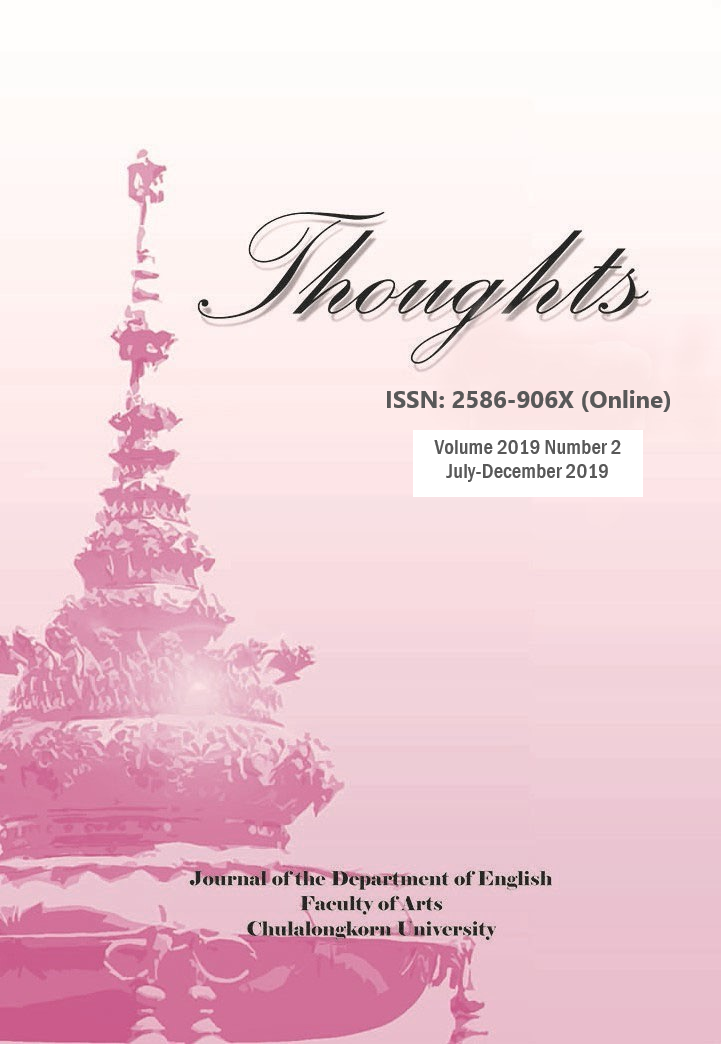Winnie Foster’s Self-Awareness in Natalie Babbitt’s Tuck Everlasting
Main Article Content
Abstract
The research article aims at analyzing 1) the self-awareness portrayed by the protagonist Winnie Foster in Natalie Babbitt’s Tuck Everlasting; and 2) the reasons behind such portrayals. The qualitative method is used, and the findings are reported in the form of a descriptive analysis. The study finds that Winnie portrays self-awareness, and it is presented three times. For the first time, Winnie’s self-awareness is seen when she runs away from home into Treegap woods, owned by the Fosters. For the second time, the self-awareness is shown when she replaces Mae Tuck in jail before Mae is hanged. For the third time, it is portrayed when she chooses to be what she has always been instead of being immortal. The study also identifies the reasons behind such portrayals. Winnie runs away from home into the woods because of the strictness of her family and the need to discover the source of secret sound of music floating from the woods. She decides to replace Mae Tuck in jail because she loves all the Tucks. The accountability for her family and the results of immortal life she learns from the Tucks cause Winnie to choose to be what she has always been instead of being immortal. Self-awareness is displayed through Winnie’s decisions which are made by herself when she runs away into the woods, replaces Mae in jail, and chooses to be normal and mortal as she has always been. Winnie uses self-awareness by herself to serve not only her personal interests but also for the benefit of others’.
Article Details
Copyright by the Faculty of Arts, Chulalongkorn University.
Photocopying is allowed for internal, non-commercial use only. Photocopying for other uses or for purposes other than indicated must be permitted in writing from the Faculty of Arts, Chulalongkorn University.
All views or conclusion are those of the authors of the articles and not necessarily those of the publisher or the editorial staff.References
Beacham, W. (1996). Beacham’s encyclopedia of popular fiction. Retrieved from https://www.bookrags.com/studyguide-tuck-everlasting/plot.html#gsc.tab=0
Bryan, G. (2003). Everlasting contrasts: Babbitt’s use of opposites in Tuck Everlasting. Children's Book and Media Review, 24(4), Article 1, 1-6. Retrieved from https://scholarsarchive.byu.edu/cgi/viewcontent.cgi?article=2256&context=cbmr
Douglas, N., & Bohlke, D. (2015a). Inside animal minds. In Reading Explorer 3 (2nd ed.,
pp. 165-167). Boston: National Geographic Learning and Cengage Learning.
Douglas, N., & Bohlke, D. (2015b). What’s on your mind? In Reading Explorer 3 (2nd ed.,
pp. 159-160). Boston: National Geographic Learning and Cengage Learning.
Fallon, C. (2016). The children’s book author who taught us to embrace death. Retrieved from https://www.huffingtonpost.com/entry/natalie-babbitt-tuck-everlasting-dead_us_ 5818e46ee4b0f96eba965248/
Hartvigsen, M. K., & Hartvigsen, C. B. (1987). Rough and soft, both at once: Winnie Foster’s initiation in Tuck Everlasting. Children’s Literature in Education, 18(3), 176-183.
Locke, J. (2004). An essay concerning human understanding [Kindle AZW version]. Retrieved from Amazon.com
Maguire, G. (2015). Foreword to the 40th anniversary edition. In N. Babbitt, Tuck Everlasting [Kindle AZW version] (p. 2). Retrieved from Amazon.com
